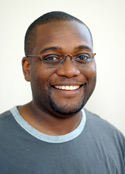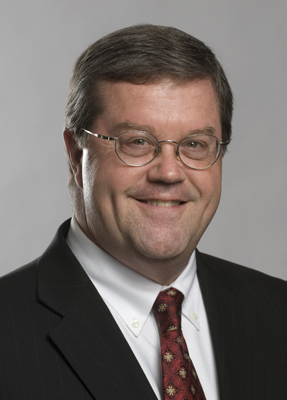“Nobody is trying to deny the seriousness of getting this under control, but does it have to be on a billboard?”
– Birmingham Mayor Larry Langford
Yes, as a matter of fact Larry, it does.
But apparently making Jefferson County residents aware of a syphilis outbreak is more of a detriment to our efforts for attracting new businesses into the region than a necessity to make sure that it does not become worse than it already is. In case you didn’t see Saturday’s Birmingham News story, two of our elected leaders feel as though bus advertisements calling attention to the fact that we have the #1 concentration of syphilis cases in the United States were portraying a bad image for the region (among other things).
While they are only removing ads announcing the outbreak off of the sides of buses, it takes away a valuable tool available to the Jefferson County Department of Health in this battle of educating the public, one that they should be commended for. It was doing what it was supposed to do – catching the attention of those that saw the signs even if only for a few seconds at a time.
If there is anyone that understands the importance of catching the attention of people in short, simple sound bites, it is the current mayor of the city of Birmingham. Mayor Langford provides just enough information to pique our interest and then he moves on to the next 6 or 7 things on his agenda. We stay just confused and bombarded long enough for the next idea to be planted and then the questions that need to be raised never are. It’s a shame, since some conversation may actually make some of these ideas better. In this case it’s a real shame that he doesn’t realize that the Department of Heath is simply taking a page out of his play book.
He’s done something again, only this time it’s something that could become a bigger issue if not handled properly. I’d like to know if he and Commissioner Fine-Collins plan to have the health department remove the billboards and television ads as well? If so, we’re going to use taxpayer dollars to remove ads that were partially paid for by taxpayer dollars trying to educate the taxpayers about a serious issue — like the logic?
Maybe he has a secret plan to use that bully pulpit that mayors possess to make sure that more people are aware…
Maybe.
Maybe spending taxpayer dollars to sweep one of our regions issues under the rug could be better spent making sure that we dealt with the outbreak appropriately, making sure that everyone was aware of the issue.
The problem with both of those solutions is that they sound too logical.
As a city recognized as a national leader in medical research, maybe the idea of making people aware of the issue constitutes our area hospitals and medical leaders doing the job that they are best known for. And it’s not like the ads haven’t had an effect, it has encouraged more people to go in and be tested for symptoms.
We can’t call the kettle black without making sure that we air all of our dirty laundry as well. We’d actually had a story prepared about the outbreak more than a month ago; however we were waiting for a list of current solutions that were being undertaken to be completed before putting it up on the site. We felt as though that was most important – making sure that solutions were presented. Unfortunately, most of us are only now writing about the issue because Mr. Langford and Ms. Fine-Collins finally gave us a reason to do so.
So we decided to run the story this morning (if you didn’t come here directly from the post, head on over to the Newsstand to take a look). Even if you feel as though this issue cannot hit you personally, it is important enough to the overall health of our region to take a good, hard look at it and what can be done to assist with handling it.
So maybe recent stories about Birmingham’s potential are just not powerful enough to overcome this outbreak as selling points, at least in the eyes of our city’s chief executive. But I think I’d rather have folks coming in to join this transplant in a movement to make the city a better place than have them wonder why we hadn’t accepted the situation and admitted to it up front — completely.
André Natta is the managing editor of The Terminal.





 The inboxes at The Terminal received several emails late yesterday afternoon, a couple of them including the responses received by two citizens after they sent in their concerns to Mayor Langford’s office about
The inboxes at The Terminal received several emails late yesterday afternoon, a couple of them including the responses received by two citizens after they sent in their concerns to Mayor Langford’s office about  When Bob Dylan’s famous lament on the nature of hypocrisy first made the charts, those of us who are now called Baby Boomers memorized all the words. Positively 4th Street pretty much laid it all bare and Dylan’s words seemed to capture what we in the 60s thought typified the hypocracy we saw all around us – in the media, in the government, in any institution with authority. What could sum up the youthful, disillusioned attitude of those watershed years better than, “You’ve got a lot of nerve to say you are my friend. When I was down, you just stood there grinning!”
When Bob Dylan’s famous lament on the nature of hypocrisy first made the charts, those of us who are now called Baby Boomers memorized all the words. Positively 4th Street pretty much laid it all bare and Dylan’s words seemed to capture what we in the 60s thought typified the hypocracy we saw all around us – in the media, in the government, in any institution with authority. What could sum up the youthful, disillusioned attitude of those watershed years better than, “You’ve got a lot of nerve to say you are my friend. When I was down, you just stood there grinning!”

Birmingham's largest block party?
/* Style Definitions */
table.MsoNormalTable
{mso-style-name:”Table Normal”;
mso-tstyle-rowband-size:0;
mso-tstyle-colband-size:0;
mso-style-noshow:yes;
mso-style-priority:99;
mso-style-qformat:yes;
mso-style-parent:””;
mso-padding-alt:0in 5.4pt 0in 5.4pt;
mso-para-margin-top:0in;
mso-para-margin-right:0in;
mso-para-margin-bottom:10.0pt;
mso-para-margin-left:0in;
line-height:115%;
mso-pagination:widow-orphan;
font-size:11.0pt;
font-family:”Calibri”,”sans-serif”;
mso-ascii-font-family:Calibri;
mso-ascii-theme-font:minor-latin;
mso-fareast-font-family:”Times New Roman”;
mso-fareast-theme-font:minor-fareast;
mso-hansi-font-family:Calibri;
mso-hansi-theme-font:minor-latin;}
There are always several ways to look at a situation, and there is no question that City Stages 20 will be second-guessed by every Monday morning events planning quarterback in the region for at least the next 2-3 months as we await the public release of the organization’s financials.
I’ll freely admit that I only attended the festival for about four hours on Saturday – time I desperately needed away from this computer to remind myself of what the real world might be like. I heard nothing but praise from folks I knew that had actually attended Friday night and danced along to Diana Ross, The Roots, Galactic and probably the biggest surprise of the evening to many, The Carolina Chocolate Drops. Later on I got to watch as Buddy Guy decided to come on down and play among the thousands that showed up to watch him after catching the end of the Hill Country Revue set.
I’ve come to think that perhaps the purpose of the festival needs to change, at least mentally. I’m not sure that one can say that it’s an event that represents the cultural heritage of metro Birmingham anymore (though getting Ross to play this year was a coup). I would say that it is a great collection of acts that many feel should be coming to our fair city anyway (and some of them do), available to us for a reasonable price.
I heard a television reporter call it Birmingham’s largest block party. That may be a better way to describe what it’s become.
It’s become an excuse for people to come together and hear great music; to see folks that you don’t run into as much anymore and catch up. In the near future it will also be an excuse for those that still think it’s not safe to come downtown to poke around between acts and see the progress that continues to take place.
I also think that it can claim that something that should be a major goal of the festival’s – exposing the City of Birmingham and the surrounding region to acts that you normally wouldn’t see or be exposed to (e.g., the Carolina Chocolate Drops).
It will never be Lollapalooza or Bonnaroo and honestly, I’m glad. If I want those types of events, I’ll find a way to go there instead. The thing is, no matter what you hear said positively about our festival, and on a larger scale this city, there will always be someone that says that you’re not being realistic or serious – that it’s bad and it will always stay that way, no matter what’s done.
I’d argue that it’s that attitude that needs to change, though some more interaction with those that could make City Stages more successful in the coming years would help. The conversations about the future of the festival have been held all over the place, including the blogosphere, forever. Harnessing it in one place, presumably a revamped version of their site, may give residents more perceived ownership of the festival, including enabling the festival to engage its fans in the selection process and allowing organizers to expose the fans to the music that will be coming. It could be a microcosm of what could be done to truly move the city forward as well, but It’s just one suggestion and it probably won’t be the last one either party hears.
That said, I am looking forward to next year, just to see what can happen…
André Natta is the managing editor of The Terminal.
Leave a comment
Posted in Commentary
Tagged AL, Alabama, Andre Natta, Birmingham, City Stages, Commentary, downtown, opinion